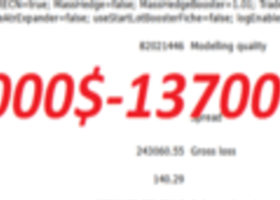The Australian dollar edged higher against its U.S. counterpart on
Friday, amid speculation the Federal Reserve will keep interest rates at
record-low levels for a considerable time.
AUD/USD hit 0.9444 on Wednesday, the pair’s highest since April 10, before subsequently consolidating at 0.9423 by close of trade on Friday, up 0.09% for the day and 0.35% higher for the week.
The pair is likely to find support at 0.9353, the low from June 25 and resistance at 0.9444, the high from June 23.
Upbeat U.S. consumer sentiment data released Friday failed to dispel concerns over the outlook for the wider economic recovery.
The final reading of the University of Michigan's consumer sentiment index rose to 82.5 this month from 81.9 in May, compared to expectations of 82.2.
The report did little to alter expectations that the Federal Reserve will keep rates on hold for an extended period after data earlier in the week showed that U.S. first quarter growth was revised sharply lower.
The dollar weakened broadly after the Commerce Department said Wednesday that the U.S. economy contracted at an annual rate of 2.9% in the first three months of the year, compared to the consensus forecast for a decline of 1.7%.
U.S. first quarter GDP was initially reported to have increased by 0.1%, but was subsequently revised to show a contraction of 1.0%.
The dollar came under additional pressure after data on Thursday showed that U.S. consumer spending rose by just 0.2% in May, below forecasts for 0.4%.
In the week ahead, investors will be looking to the U.S. nonfarm payrolls report on Thursday for further indications on the strength of the labor market, while the Reserve Bank of Australia’s policy meeting on Tuesday will also be in focus.
Ahead of the coming week, Investing.com has compiled a list of these and other significant events likely to affect the markets.
Monday, June 30
AUD/USD hit 0.9444 on Wednesday, the pair’s highest since April 10, before subsequently consolidating at 0.9423 by close of trade on Friday, up 0.09% for the day and 0.35% higher for the week.
The pair is likely to find support at 0.9353, the low from June 25 and resistance at 0.9444, the high from June 23.
Upbeat U.S. consumer sentiment data released Friday failed to dispel concerns over the outlook for the wider economic recovery.
The final reading of the University of Michigan's consumer sentiment index rose to 82.5 this month from 81.9 in May, compared to expectations of 82.2.
The report did little to alter expectations that the Federal Reserve will keep rates on hold for an extended period after data earlier in the week showed that U.S. first quarter growth was revised sharply lower.
The dollar weakened broadly after the Commerce Department said Wednesday that the U.S. economy contracted at an annual rate of 2.9% in the first three months of the year, compared to the consensus forecast for a decline of 1.7%.
U.S. first quarter GDP was initially reported to have increased by 0.1%, but was subsequently revised to show a contraction of 1.0%.
The dollar came under additional pressure after data on Thursday showed that U.S. consumer spending rose by just 0.2% in May, below forecasts for 0.4%.
In the week ahead, investors will be looking to the U.S. nonfarm payrolls report on Thursday for further indications on the strength of the labor market, while the Reserve Bank of Australia’s policy meeting on Tuesday will also be in focus.
Ahead of the coming week, Investing.com has compiled a list of these and other significant events likely to affect the markets.
Monday, June 30
- The U.S. is to produce data on manufacturing activity in the Chicago region and a report on pending home sales.
- The Reserve Bank of Australia is to announce its benchmark interest rate and publish its rate statement, which outlines economic conditions and the factors affecting the monetary policy decision.
- Later Tuesday, the Institute of Supply Management is to publish a report on U.S. manufacturing activity.
- Australia is to release data on the trade balance, the difference in value between imports and exports.
- The U.S. is to release the ADP report on private sector job creation, which leads the government’s nonfarm payrolls report by two days. The U.S. is also to release data on factory orders.
- Later Wednesday, Fed Chair Janet Yellen is to speak at an event in Washington; her comments will be closely watched.
- Australia is to publish data on building approvals and retail sales. RBA Governor Glen Stevens is to speak at an event in Hobart.
- The U.S. is to release data on the trade balance, as well as the weekly report on initial jobless claims. The U.S. is also to publish what will be closely watched government data on nonfarm payrolls and the unemployment rate, one day ahead of schedule due to the fourth of July holiday.
- Later Thursday, the ISM is to publish a report service sector activity.
- Markets in the U.S. are to remain closed for the Independence Day holiday



